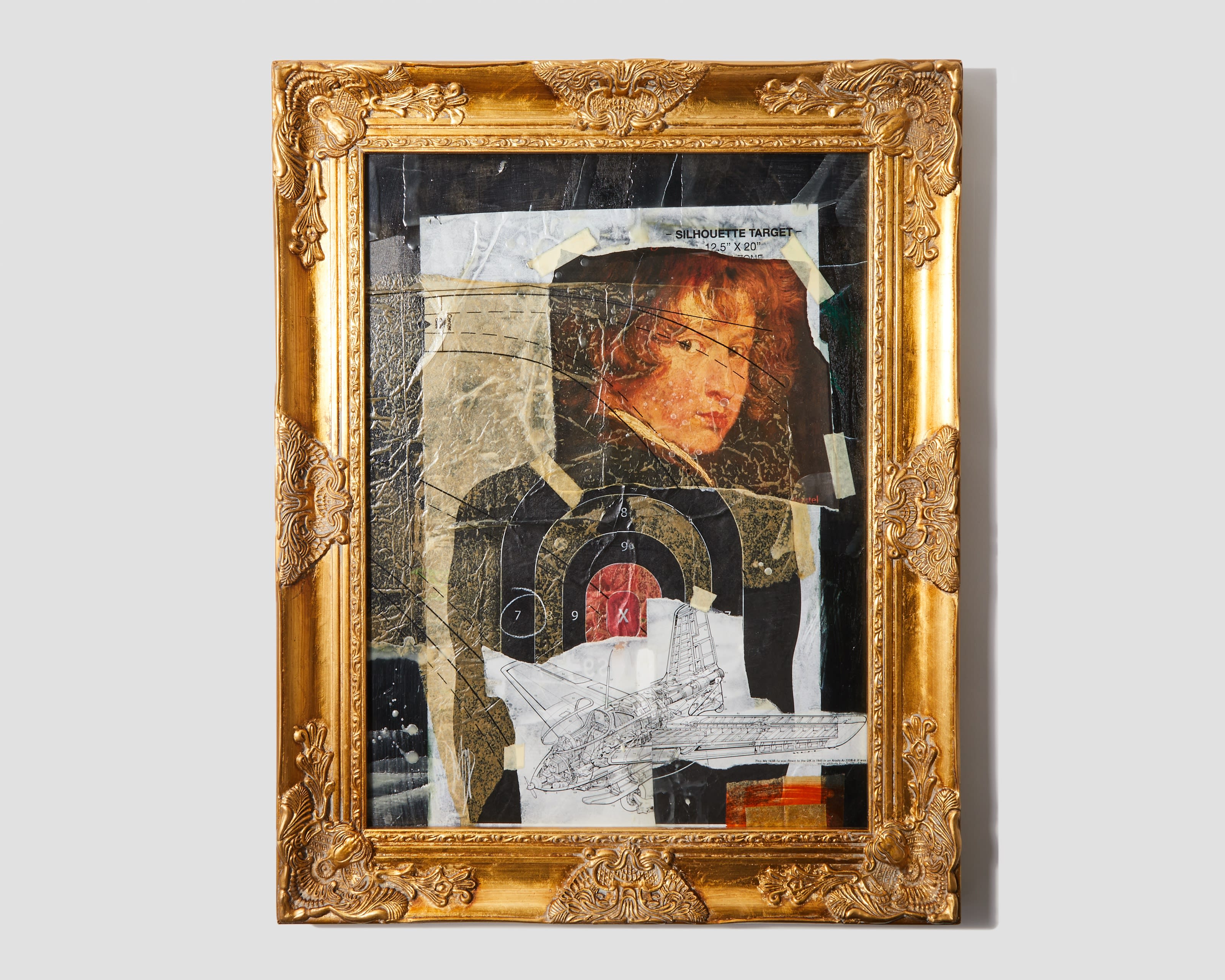Steven Campbell is a natural storyteller, but his works aren't as easygoing and open as he is. An artist, educator, and master printmaker, Campbell has dedicated his life to plucking, then refining, artistic visions from the collective subconscious. Whether he is working on a collage or painting, or helping his students understand what it means to think like an artist, Campbell approaches life with a creative intuition borne from a decades-long career in the arts. The characteristic immediacy of his process parallels the philosophical sentiment that underlies Kierkegaard's infamous maxim: "Life can only be understood backwards, but it must be lived forwards." Like living, creating art requires constant action and is an active process whose intent is easier understood with distance and the passage of time.
Track the inner workings of one of Santa Fe's most curious minds in this winding interview that outlines Campbell's artistic process and latest exhibition, The Tyranny of Small Things.

The artist himself, Steven Campbell.
Spencer Linford: Steve, most people in the general public know you as a master printmaker and an educator, but at heart, you are and always have been an artist. Can you tell us how you began collaging?
Steven Campbell: Well, I have always had an interest in it, you know, particularly German collage, like Hannah Höch and John Heartfield — Always loved that stuff — I dabbled in it for years, but, you know, I would mostly make prints. It really took off when Chris and I went to see a friend of ours, a tattoo artist named Nick Bubash, in Pittsburgh. We went there to get some tattoos and stuff. Nick was a recovering alcoholic and a drug addict. He was terrified that we'd want to go out and party. But we're not big partiers. So then he says, well, do you want to go to bookstores? And it was like, oh yeah, yeah, so we spent the weekend haunting bookstores. On the way back, Nick gave me a large volume of etchings from the Salon of 1875, reproductions of famous paintings. Nick giving me that book was the embryonic stage of starting to collage.
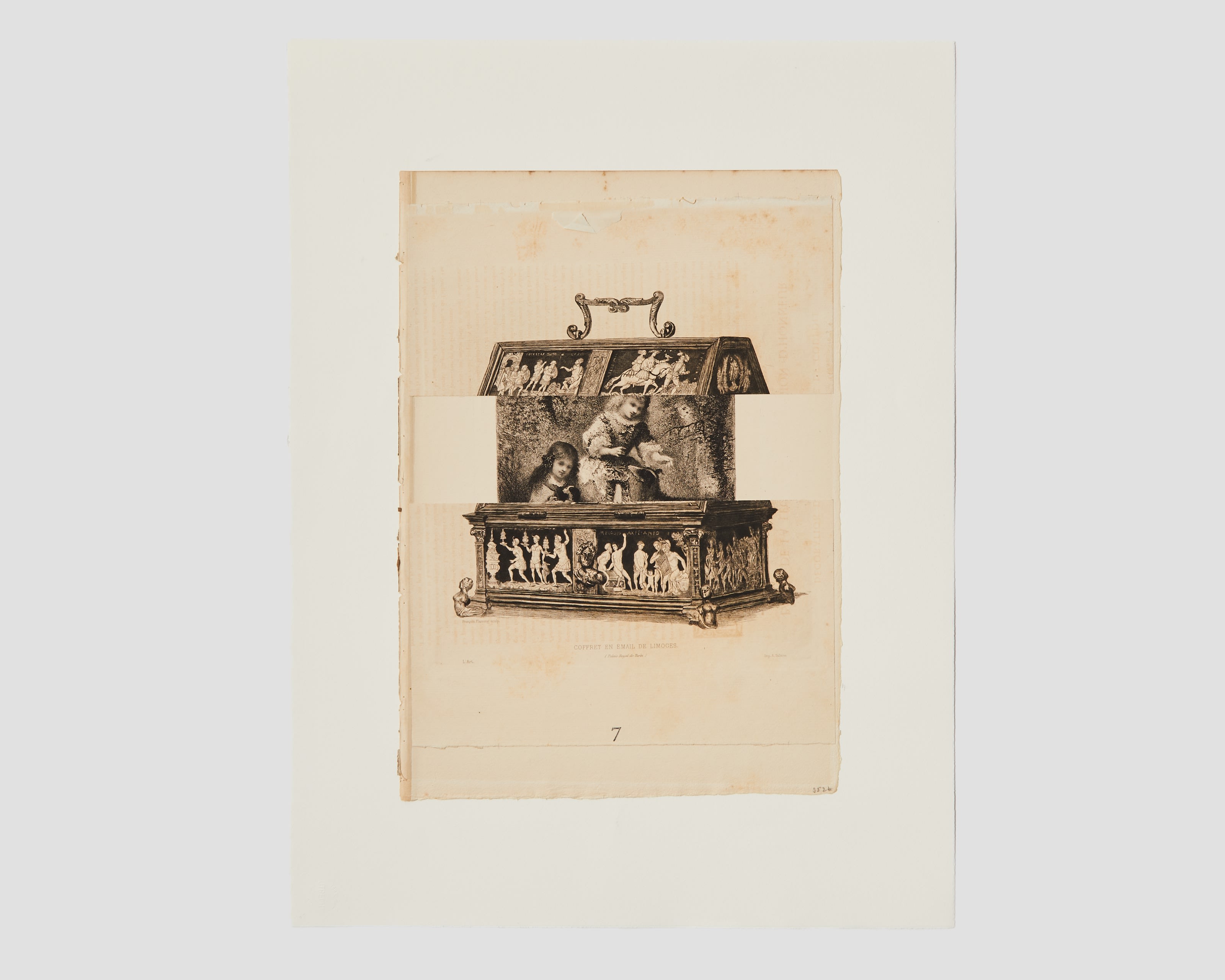
SL: The Salon dictated artistic tastes and artist success in the Western World for nearly 200 years. Did it feel strange to tear up the historical reproductions of work that Western culture has held in such high regard for so long?
SC: No, I immediately wanted to tear them up. People asked me, you know, "Are you crazy?" because they're beautifully done etchings, printed at some guild. People believe these things are valuable. I like thinking, you know, maybe I was repurposing them instead of destroying them. It's easy to say destroy. To destroy is simple, but really, I'm destroying the original intent of the object, not the object itself.

SL: I know you’ve always been an artist, but you still had to work for a living. When did your collaging practice transition from something you worked on between work and daily life to a disciplined practice that produced this exhibition?
SC: It really accelerated during COVID. Nothing to do all day, right? So I just started making collages. I made — had to make —, you know, almost 50 of them during that period.
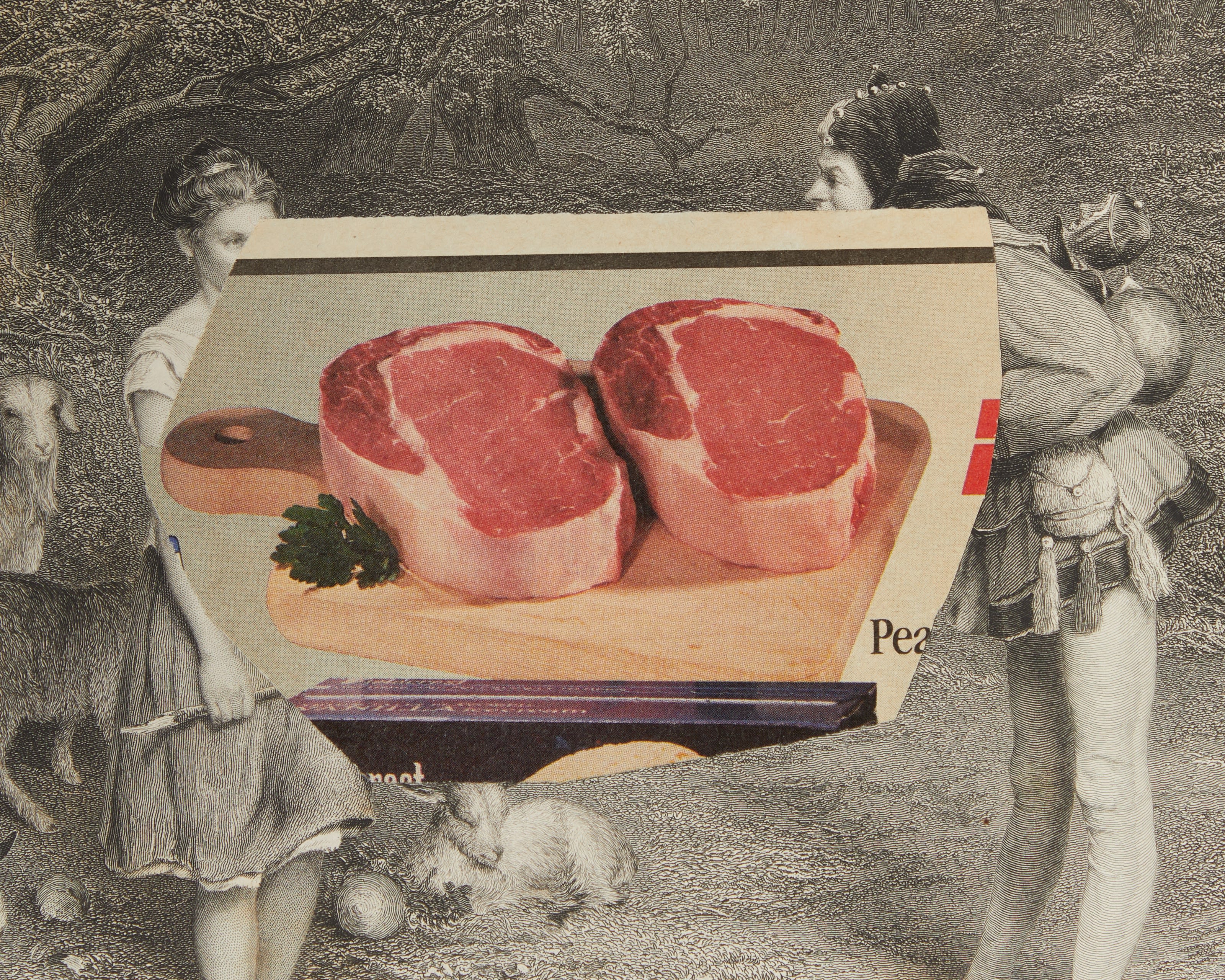
SL: COVID was terrible, but there were some silver linings to be had, such as your being able to work in your studio uninterrupted. Did having all of that time to work on your art make you see the work in a new light?
SC: Oh, yeah. Each piece informs the next. So when you have the luxury of just making art, it's amazing. I can see them change. I think they get a little more sophisticated, in my view anyway, as I work. Collage tends to default to whimsy. My pieces have humor but for the most part, they are dark, and I enjoy that. I try to keep all the elements in it to a minimum. Just try to keep the images as clear as possible.
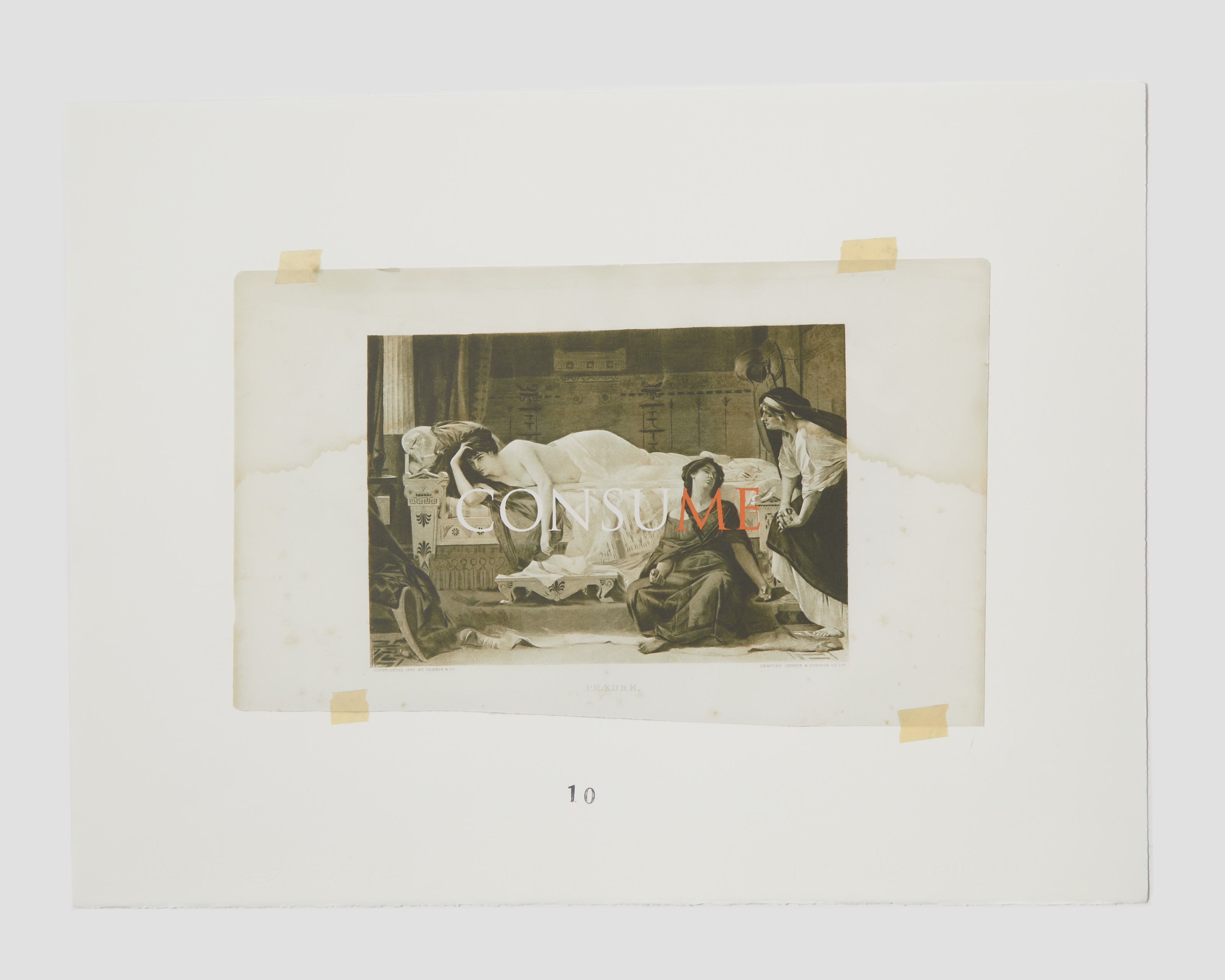
SL: Many of the works in this show hint at a narrative arc that is upended, refuted, or mocked by your selection of formal elements. How do these narratives find their way into the work?
SC: The narrative suggests itself as I work. Envision this, I have stacks of paper all around me, hundreds of pages of all sorts of things. Sometimes things happen really easily in that sort of environment, you know? A torn piece of paper will flit onto another image and then, "ah!," there's something there. And then the narrative suggests itself out of that random chance.

SL: Many artists work intuitively. I’ve heard it said that great artists are really conduits for the collective subconscious. Do you think that is true?
SC: Well, I've never sat down and thought, "This is what I'm going to do: XYZ." I would be defeated at that point.
SL: Content is more important than technique to you, correct? Is there a specific type of content you aim to create when you work?
SC: A lot of my work has either religious or political overtones or undertones. But I don't want them to be so overt that there's no mystery to the piece.
SL: The piece that grabbed me with its political and religious allusions was Friends of Kafka #9, the piece that depicts Edwin Booth as Cardinal Richelieu. It feels like a social critique. What is happening there?

SC: In that particular piece, I picked out a few elements and saw how far I could push it. You know, any context, particularly with that one, has to come later if that makes any sense at all...You know, one of the things I will say about working with a lot of these artists in my printmaking career is that they come in and they make the piece. They work intuitively, right? And then afterward you look at it, and look at it, and then you go, "huh. Well, that worked out pretty good, didn't it?"
SL: Yes, the human mind is hardwired to pick out patterns, even where none exist initially. Speaking of working intuitively, is that how you approach your sculptural work? How did the sculptural pieces come to be?
SC: I inherit things, from friends and family, or I find stuff that interests me, and then these objects sit there gathering dust, on top of a cabinet or something, then moved over to a shelf, like the ducks. And then eventually I will decide that I have to do something with them — The ducks were immensely irritating to me in their banality. I wanted to change them.

SL: Although objects are inanimate, certain ones can construct identity, collect memories, and preserve knowledge — How do you pick which objects are worth keeping and turning into art?
SC: That question reminds me of my friend Tony Fitzpatrick, who had a gallery called the Dime Museum. Do you know what a dime museum is? It's like a roadside attraction. You go in and see somebody's collection of milk bottles, or tractors out in their yard. That's what a dime museum is. My house is kind of like that, crap everywhere, but I like it; It's fun. I enjoy being in the house.
SL: I guess it goes back to how you work being surrounded by material. Are there certain things you return to over and over again to get inspiration, like a movie, magazine, painting, or anything else you have around the house?
SC: Not really, no. Take the shoe forms. I bought the first three of them at the Salvation Army store in Hayward, California, because they were interesting. Like the ducks, I carried them around forever until I thought, "I gotta do something with these." Because by themselves they were not that interesting.
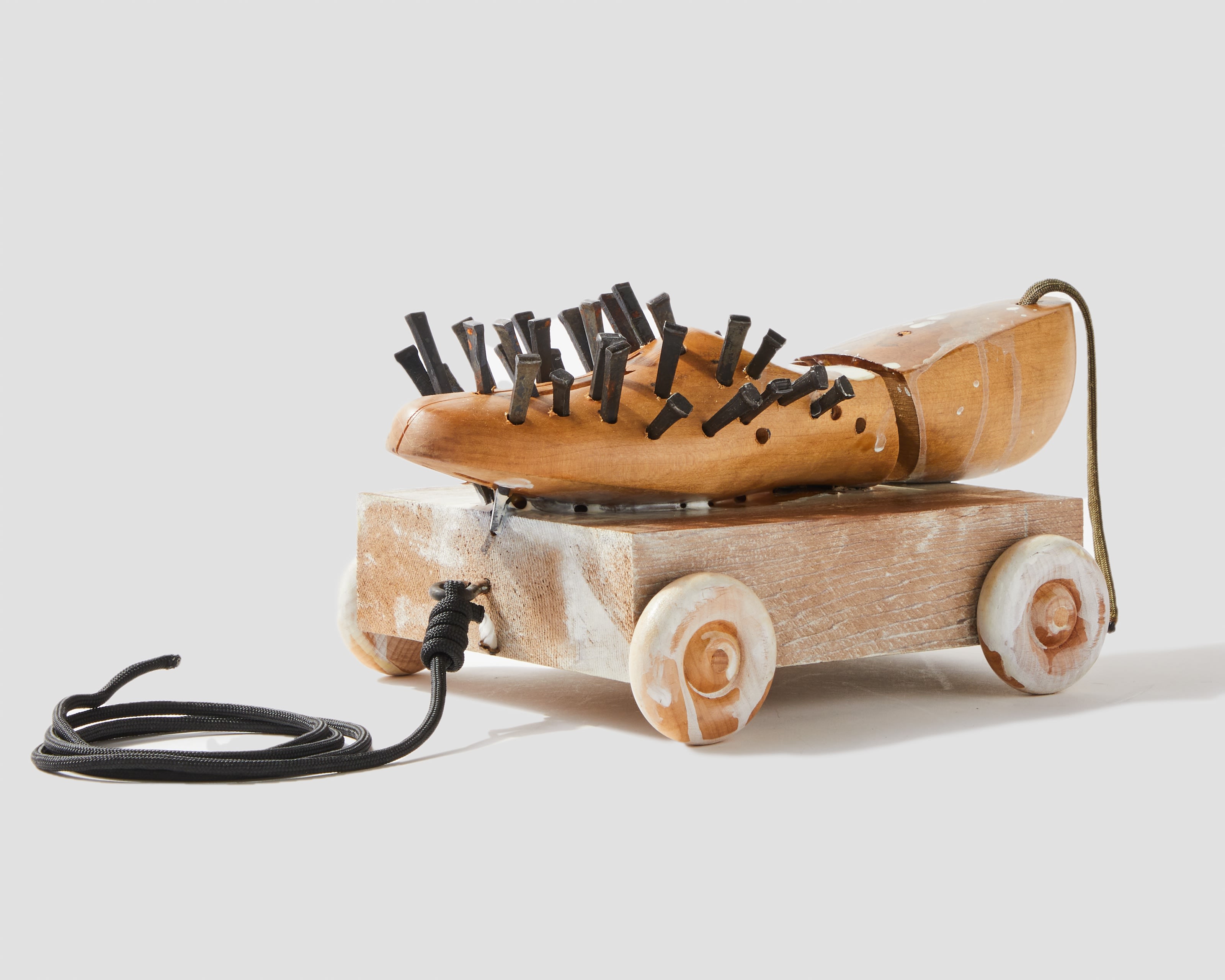
SL: A lot of the materials you use go through a period of incubation first. What pushes you over the edge to turn these materials into art?
SC: It's compulsive, I think. Stuff will lay around, you know. Eventually, you think, "I gotta do something with this." But it is important to me that the art is about content rather than technique — I think the fact is a lot of people look at art from the lens of, "Will it look good in a room." But art isn't necessarily supposed to be decor. It can strike a nice balance, obviously, between content and technique, especially if you want to sell it — I just hope that whatever I have on the wall creates a dialogue. That’s all.
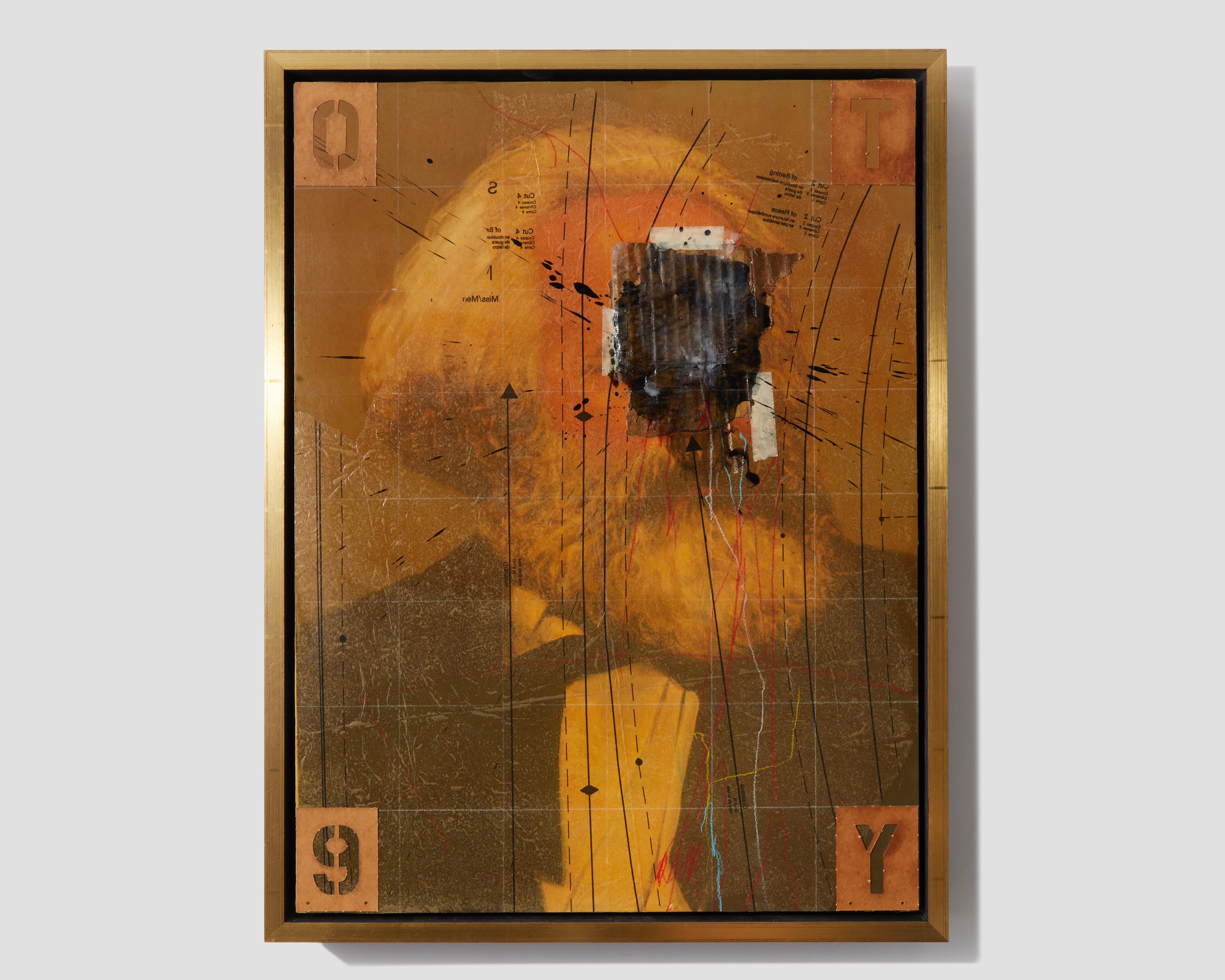
SL: Speaking of creating a dialogue, the Treatise series appears to have a clear narrative. Can you tell us a little bit about these larger mixed media paintings?
SC: For this grouping, the one with Abraham Lincoln, I picked targets out of the trash can at the range and used those. Some of them are mine. Some of them are my friends'. But I wanted a sort of subversive anti-gun stance, but I didn’t want it to be, “GUN REGULATION NOW!” I was raised all my life with firearms, right? But whenever a shooting occurs, the first thing that pops into my mind is, how irresponsible it is that they would let anybody have a gun. I like my flintlock and percussion rifle, but you know what? I’d give them up if it would save one person’s life. In terms of process, once I get the first thing down, and start making that journey to completing a piece, whatever is within reach is what I use to make the piece. If it’s masking tape, great. Beeswax, it’s on — It could be an old dress pattern that I find and shellac onto the canvas. At the early stage of creating, the activity is more important than the material.
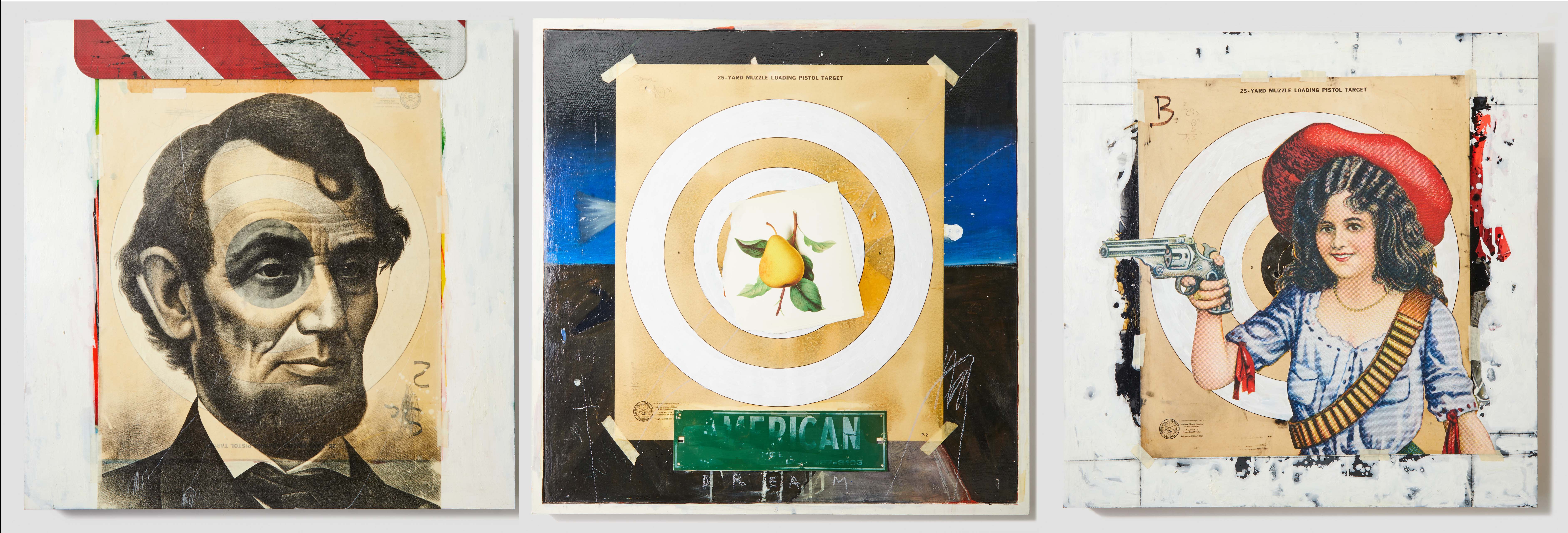
From left to right: Treatise #3, Treatise #2, Treatise #1 2024. Collage, paint on panel. 25 3/4 x 19 3/4 in/each.
SL: It takes a long time to develop a sensitivity to the narratives of discarded objects. How did you train this awareness of the creative potential of random objects? Was it the people you worked with in the Bay Area?
SC: When I went to Cal State Hayward, before they lost funding, they were putting these titans of art on staff and tenuring them. The faculty’s guiding maxim was, “You’re an artist.” If a student would pigeonhole themselves in a particular medium and say, “I’m a printmaker.” “I’m a painter.” etc., they would be slapped down: “You are an artist.” The idea was that you should be able to do all these things and think in all modes. That stayed with me. It’s something I try to instill where I teach, over at Santa Fe Community College; Pull inspirations from everything, be a conduit.
SL: Steve, this has been great. Thank you for taking the time to let me pick your brain.
SC: You're welcome. Thank you.
